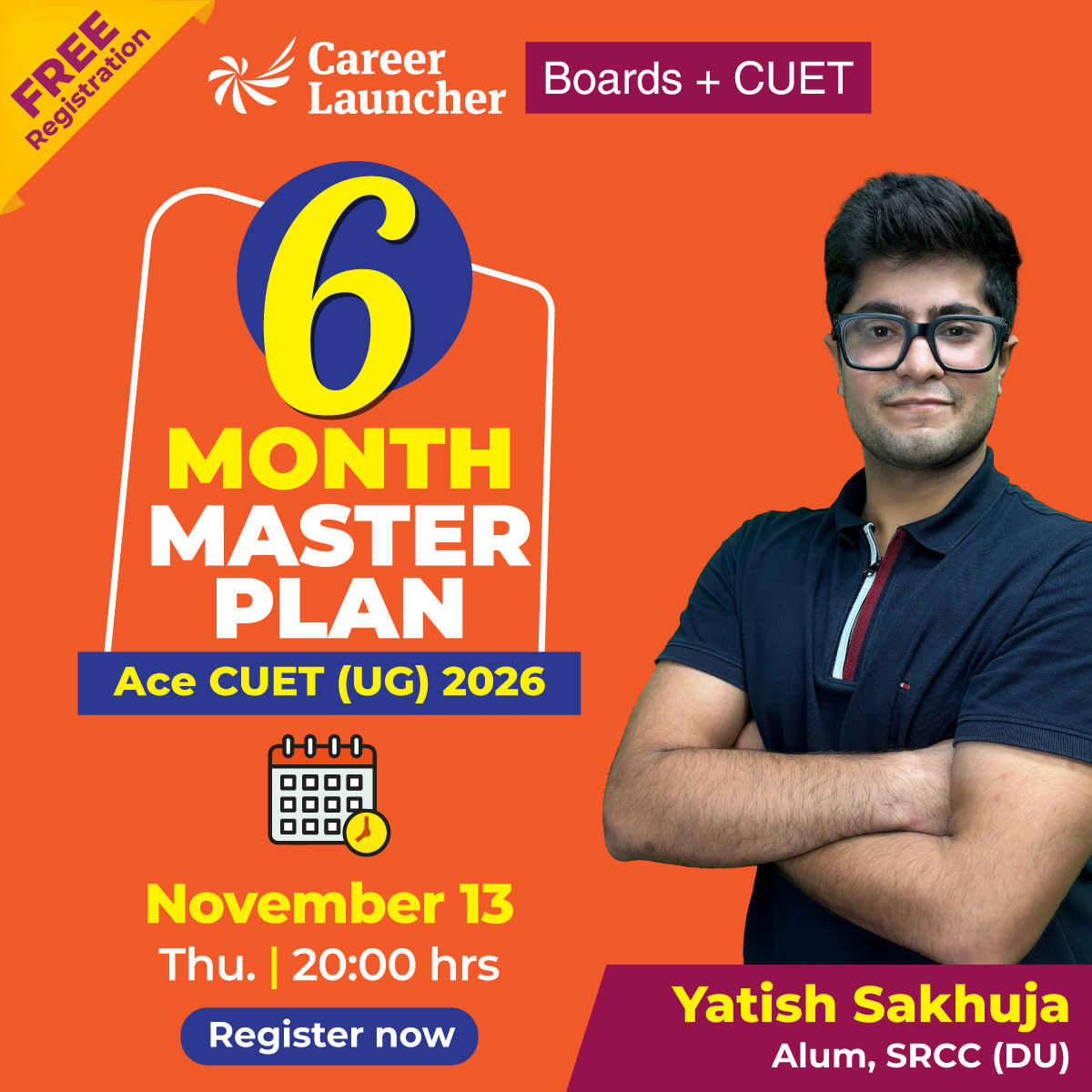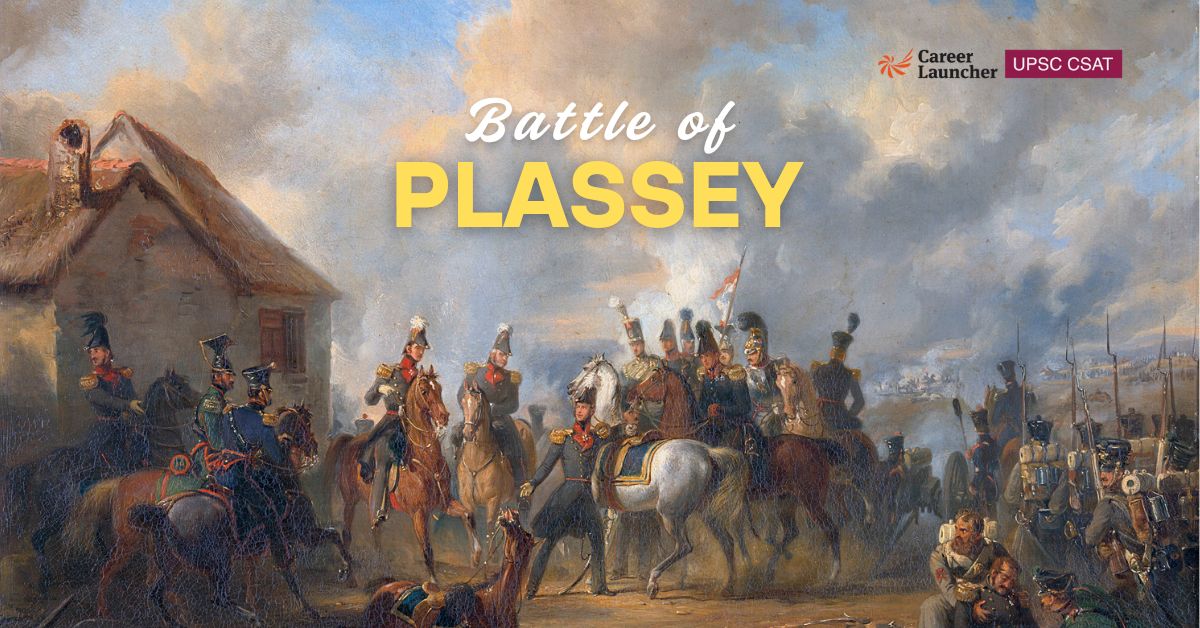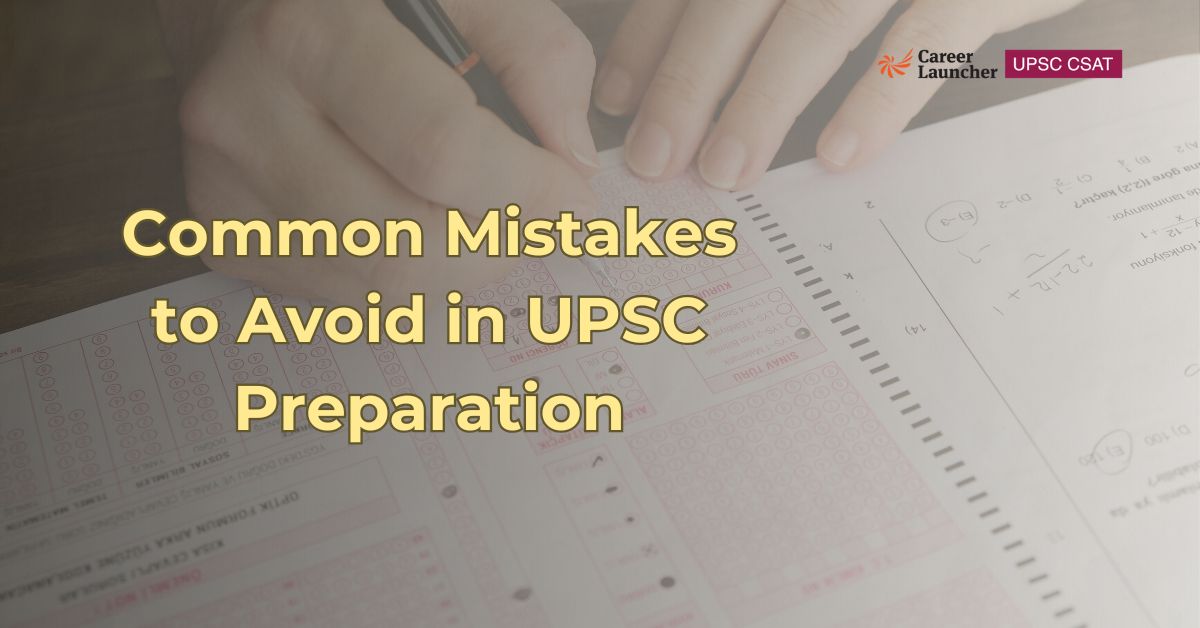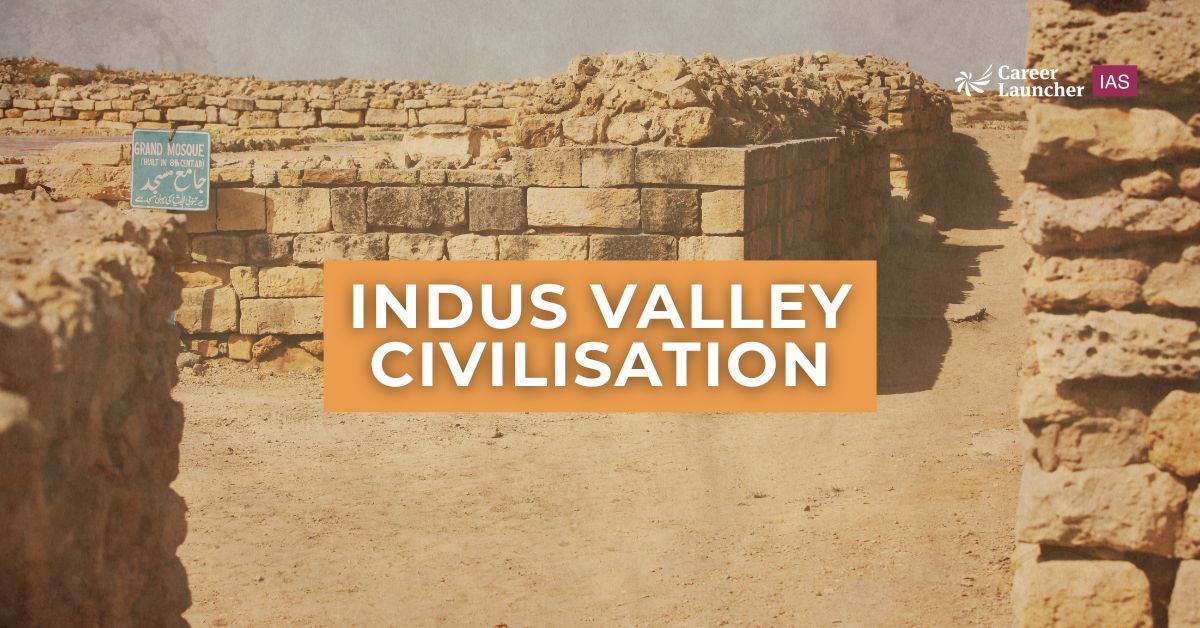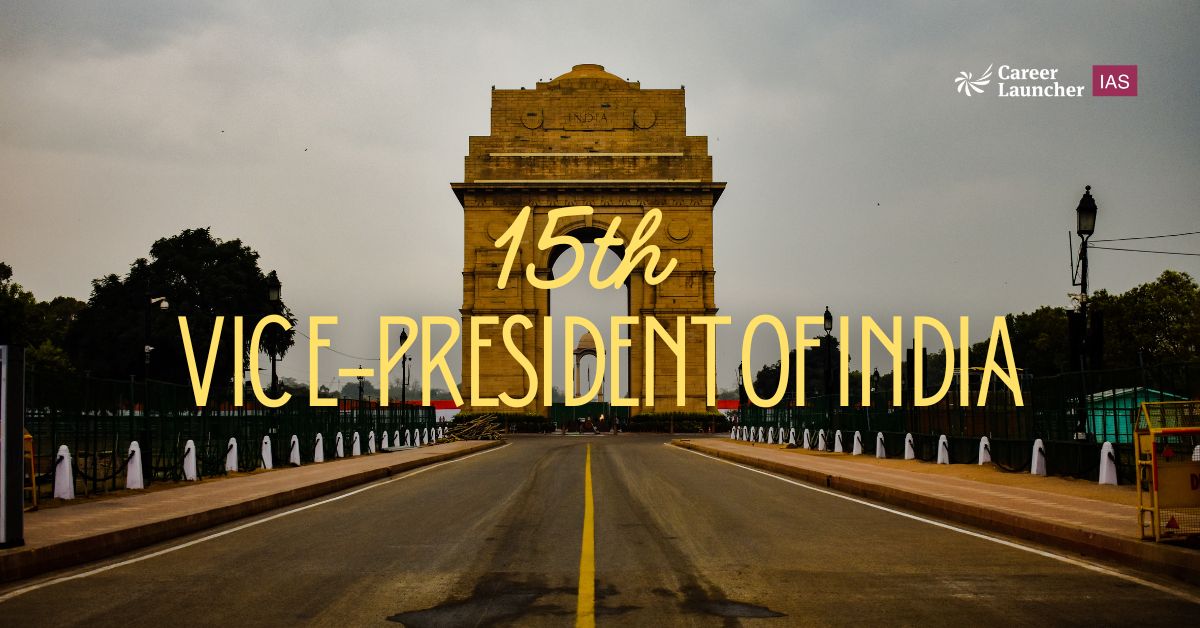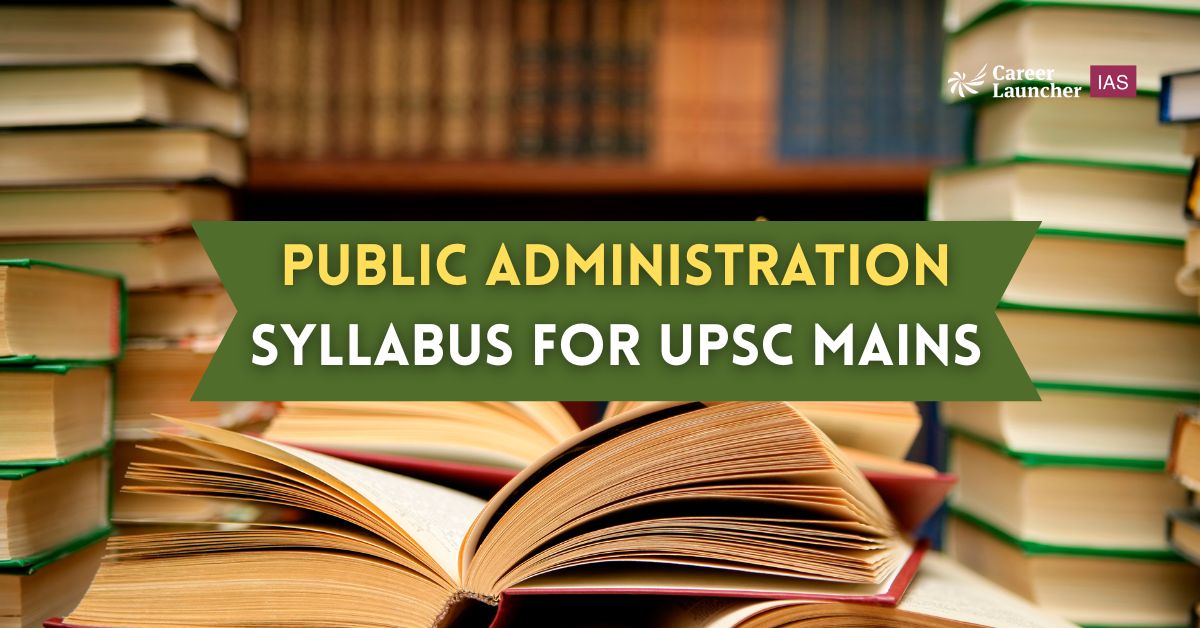The Battle of Plassey was fought on 23rd June 1757 in the Plassey region of West Bengal. This battle was fought between the British East India Company, led by Robert Clive, and the Nawab of Bengal, Siraj-ud-daula. The French troops were also a part of this battle and fought with Siraj-ud-daula against Robert Clive. The 50,000 soldiers in the army of the Nawab of Bengal, with French troops on their side, severely outnumbered the British forces, which had around 3000 soldiers. However, the conspiracy of Robert Clive and the subsequent betrayal by Mir Jafar, Rai Durlabh, and others turned out to be the reason for the defeat of the Nawab of Bengal, Siraj-ud-daula, in the Battle of Plassey.
The Battle of Plassey is regarded as a pivotal battle for the British and a turning point in India’s history, marking a shift in favour of the British. It established the military and political supremacy of the British in Bengal. Most historians regard the Battle of Plassey as the decisive event that laid the roots of British dominance and rule over India.
Related Article – UPSC Exam Calendar 2026
This article will discuss the background, causes, and other key points related to the Battle of Plassey.
Table of Contents
Causes for the Battle of Plassey
It is important to understand the events that led to the Battle of Plassey in 1757. Here are some key events that preceded the Battle of Plassey, leading up to it.
- Siraj-ud-Daula succeeded his grandfather, Alivardi Khan, as the Nawab of Bengal. He had become the Nawab of Bengal the year before, and he had ordered the English to stop the extension of their fortification.
- The victory of the British in the Carnatic wars has made Siraj-Ud-Daula apprehensive about the rising power of the British in India.
- The officials of the Company made rampant misuse of its trade privileges that adversely affected the nawab’s finances.
- The British fortified Fort Williams without the Nawab’s permission, which infuriated him further. He marched to Fort Williams and captured 146 British soldiers and imprisoned them in a small room, because of which 123 British soldiers died. This incident is known as the Black Hole Tragedy of Calcutta.
- Upon this, Robert Clive was sent to Bengal to strengthen the position of the British in Bengal. He bribed some of the chief members of the Nawab of Bengal and promised kinship to Mir Jafar in return for his betrayal of the Nawab.
The Battle of Plassey: Timeline
- 1756: After the death of Alivardi Khan, his grandson Siraj-ud-Daulah ascended the throne of Bengal. The British East India Company was wary of Siraj’s independent authority and wanted to install a puppet ruler who would grant trade privileges and political favours.
- The Company began to secretly support rival claimants to the throne, hoping to replace Siraj. This included forming secret alliances and trying to influence succession politics.
- The British interference angered Siraj, and he demanded that the Company cease meddling in the internal affairs of Bengal, stop fortifying its settlements (especially in Calcutta), and pay overdue trade duties and revenues owed to the Bengal administration.
- After failed negotiations, Siraj marched with 30,000 troops to the British trading post at Kassimbazar near Murshidabad. He captured Company officials, sealed warehouses, disarmed British personnel, and blockaded English ships.
- Siraj then proceeded to Calcutta, capturing Fort William, the Company’s stronghold. The incident led to the infamous ‘Black Hole of Calcutta’, where several British prisoners allegedly died in confinement.
- In response to the fall of Calcutta, the Company sent a military expedition from Madras. Commanded by Robert Clive and supported by Admiral Charles Watson, British forces recaptured Calcutta in January 1757.
- This was followed by prolonged diplomatic negotiations between Clive and Siraj, but trust was broken on both sides.
- While negotiations continued, Clive secretly allied with Mir Jafar, Siraj’s commander-in-chief. Mir Jafar agreed to support the British in exchange for being made Nawab after Siraj’s defeat.
- 23 June 1757: Robert Clive led the Company’s army to Plassey.
- Mir Jafar’s forces did not fight back, leading to Sirajuddaulah’s defeat.
- This battle marked the first major victory of the British East India Company in India.
- Sirajuddaulah was assassinated after the battle.
- Mir Jafar was installed as the new nawab by the Company.
Who Fought in the Battle of Plassey?
The battle was primarily fought between the East India Company, led by Robert Clive, and the Nawab of Bengal, Siraj-ud-daula. However, there are some key people involved in the battle. Questions related to such people are often asked in UPSC and other government exams. Let’s look at all the important people involved in the Battle of Plassey:
- Siraj-ud-daula: He was the then Nawab of Bengal. He took on the East India Company because of their misuse of dastaks. The more immediate cause of the Battle of Plassey was the fortification of Fort William by the East India Company
- Robert Clive: Robert Clive was the commander-in-chief of the army of the British East India Company. He bribed the key people of the army of the Nawab of Bengal, Siraj-Ud-Daula, and conspired with the bankers and merchants of Bengal to get him imprisoned and finally killed.
- Mir Jafar – He was the Mir-Bakshi or the military head of the Nawab of Bengal’s army. However, he betrayed Siraj-Ud-Daula upon being bribed by Robert Clive. This was also one of the major causes for Siraj-ud-daula’s defeat in the Battle of Plassey.
- Rai Durlabh: He was also one of the commanders of Siraj-ud-daula’s army, but he also betrayed the Nawab, having been bribed by the East India Company.
- Jagat Seth: He was the biggest banker of Bengal at the time. He was a part of the conspiracy that involved the imprisonment and ultimate killing of Nawab Siraj-Ud-Daulah.
The key people who betrayed Siraj-Ud-Daula during the Battle of Plassey were Mir Zafar, Rai Durlabh, and Khandim Khan.
In addition to them, the people who conspired against Siraj, which ultimately led to his imprisonment and death, were Manikchand, Aminchand, and Jagat Seth.
The two people who remained loyal to Siraj-Ud-Daula were Mir Madan and Mohanlal.
Questions From the Battle of Plassey in UPSC Prelims Exam
Questions that have one-word or one-line answers are generally asked in the UPSC Prelims. A few possible questions that can be asked about the Battle of Plassey are:
- Who fought in the Battle of Plassey?
- When did the Battle of Plassey take place?
- Where did the Battle of Plassey take place?
Questions From the Battle of Plassey in UPSC Main Exam
The UPSC Main requires candidates to write answers in great detail. Hence, thorough knowledge of the topic becomes essential. The following are a few possible questions that may be asked about the Battle of Plassey in the UPSC Main Exam.
- What were the reasons behind the Battle of Plassey?
- The Battle of Plassey marked the beginning of the political supremacy of the English East India Company in India. Elucidate.
- What were the factors that led to the war between the East India Company and Nawab Siraj-ud-Daulah? Discuss.
This is a brief overview of the Battle of Plassey for the UPSC Civil Services Examination. To read more academic articles for your UPSC preparation, refer to the links below.
Related UPSC Articles –
| Indus Valley Civilisation | Article 21 | President of India |
